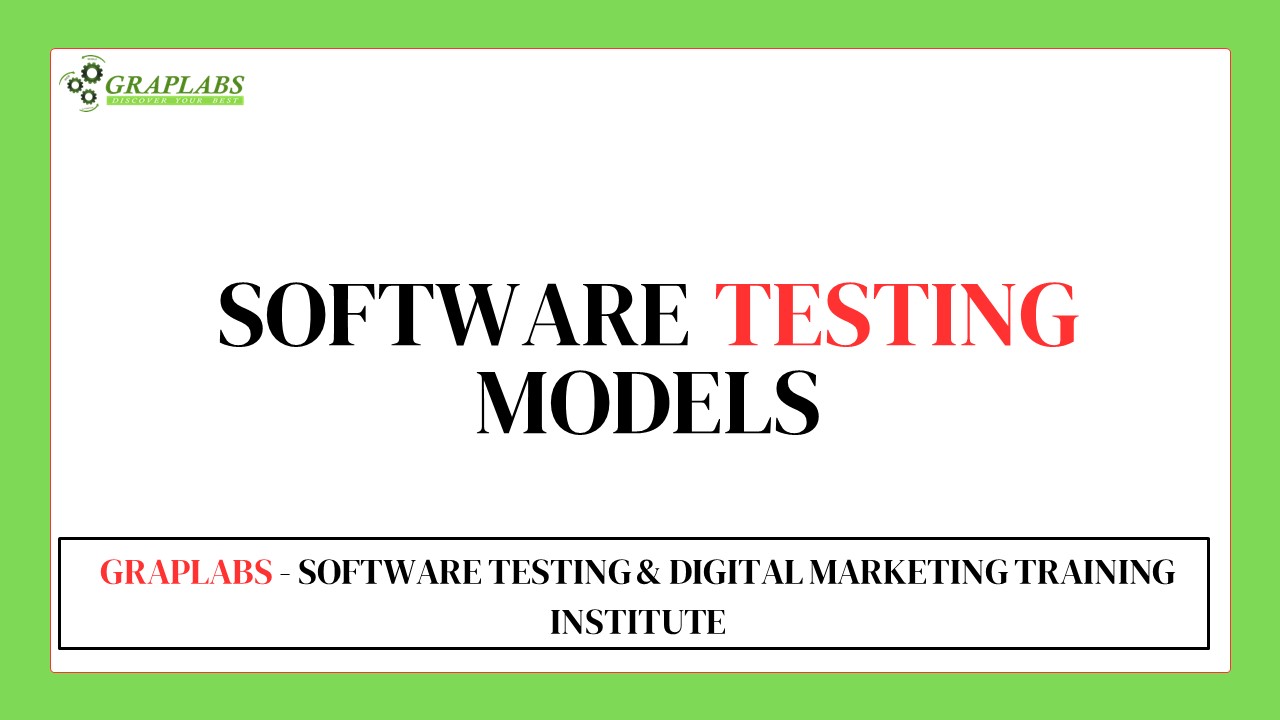Software Testing Models - Graplabs - PowerPoint PPT Presentation
Title:
Software Testing Models - Graplabs
Description:
Software Testing Models: A Comprehensive Overview is a valuable PPT resource provided by Graplabs - who offers Software Testing & Digital Marketing Training in Chandigarh. The PPT covers well-known models such as Waterfall, V-model, Iterative, Spiral, and Agile. Each model is succinctly described, highlighting its unique advantages and disadvantages in software development and testing processes. This PPT submission is an excellent reference for students seeking to understand testing models. With clear explanations and insights, it serves as a valuable guide for the students. – PowerPoint PPT presentation
Number of Views:3
Title: Software Testing Models - Graplabs
1
SOFTWARE TESTING MODELS
GRAPLABS - SOFTWARE TESTING DIGITAL MARKETING
TRAINING INSTITUTE
2
1
Waterfall model
V-model
2
Iterative model
3
4
Spiral model
Agile model
5
3
Waterfall model
The Waterfall Model is a linear sequential
approach where testing is typically performed
after the development phase is completed. Each
phase, including requirements gathering, design,
development, testing, and deployment, is
completed before moving on to the next phase
4
Advantages
Disadvantages
- Not flexible, changes are difficult to implement
- Testing is done at the end of the development
process, so defects are found late - Not suitable for complex projects
- Simple and easy to understand
- Well-defined and structured process
- Easy to track progress
5
V-model
The V-model is a variation of the waterfall
model, It emphasizes the relationship between
each phase of the development process and its
corresponding testing phase. The testing
activities are planned in parallel with each
development phase, enabling early test planning
and higher test coverage.
6
Advantages
Disadvantages
- Combines the advantages of the waterfall model
and the iterative model - Testing is done throughout the development
process, so defects are found early - Well-suited for complex projects
- Can be more complex to manage than other models
- Requires a high level of communication and
coordination between developers and testers
7
Iterative model
The Iterative Model involves repetitive cycles of
development and testing. Each iteration includes
requirements gathering, design, development, and
testing activities. Feedback from each iteration
is used to refine subsequent iterations, enabling
progressive refinement of the software.
8
Iterative model
Advantages
Disadvantages
- Early delivery of working software
- reduce risk by identifying and addressing defects
early in the development process. - Increased customer satisfaction
- can be more costly than other models
- Can be more complex to manage.
- Can be difficult to estimate the final cost and
time of the project.
9
- Planning
4. Evaluation
Spiral model
The Spiral Model combines elements of both
waterfall and iterative models. It emphasizes
risk management through multiple iterations. Each
iteration includes planning, risk analysis,
engineering, and evaluation phases. The model
allows for continuous refinement of the software
while managing potential risks.
2. Risk Analysis
3. Engineering
10
Spiral model
Advantages
Disadvantages
- Combines the advantages of the waterfall model,
the iterative model, and the incremental model - Risks are assessed and mitigated throughout the
development process - Well-suited for complex projects with high levels
of uncertainty
- Can be more complex to manage than other models
- Requires a high level of communication and
coordination between developers and testers
11
Agile model
Agile testing models, such as Scrum or Kanban,
are iterative and incremental development
approaches. Testing is an integral part of each
iteration or sprint, and testing activities are
conducted concurrently with development. Agile
models emphasize frequent communication,
collaboration, and adaptive planning.
12
Agile model
Advantages
Disadvantages
- Flexible and adaptable to change
- Frequent delivery of working software
- High level of customer involvement
- Can be difficult to manage
- Requires a high level of technical skill from the
team - Not suitable for all projects
13
FOR MORE INFORMATION
info_at_graplabs.com
82888-86448
www.graplabs.com































